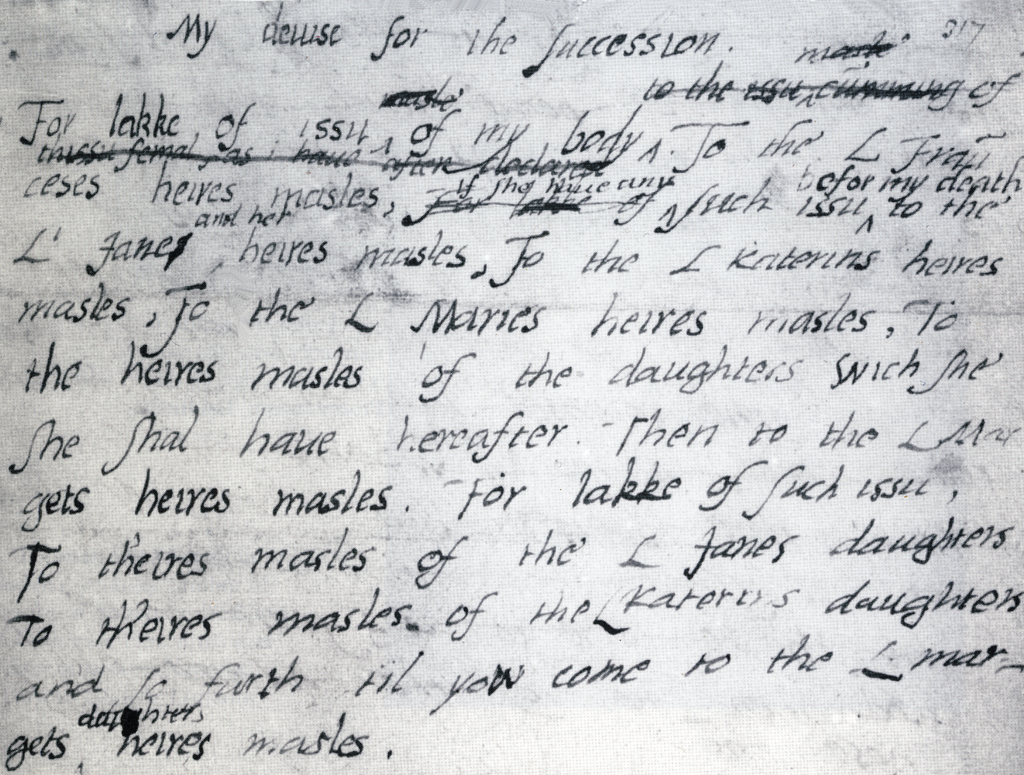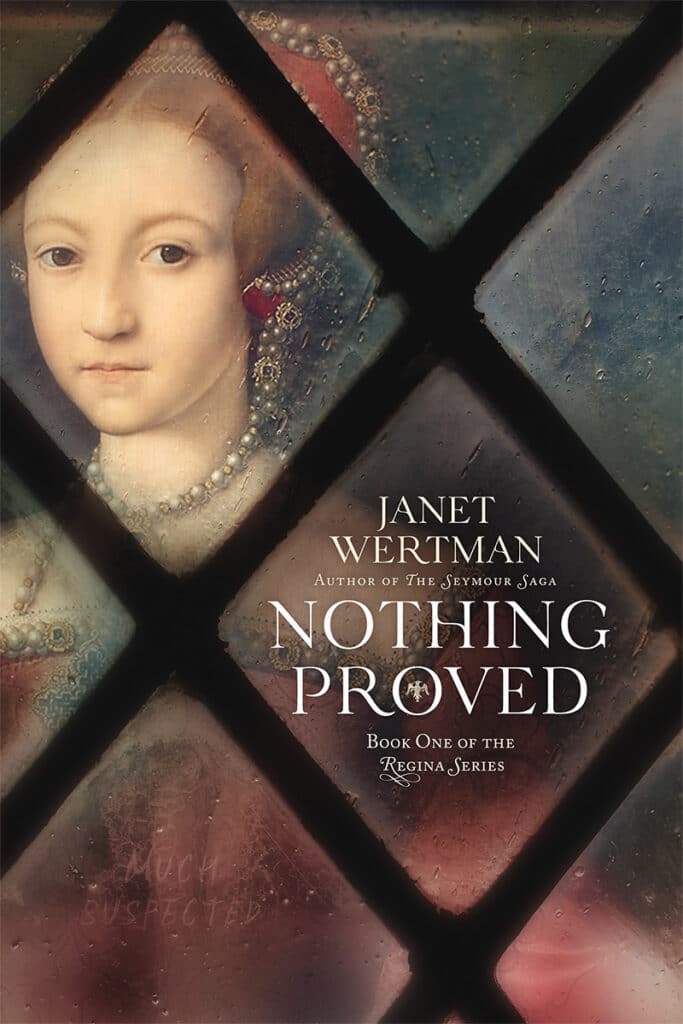
Edward VI was a tragic figure. King at nine, dead at sixteen – and had to execute two uncles in between. He was also staunchly Protestant, and after he fell ill in early 1553 he started to worry that the existing legal structure would pass the throne to his Catholic sister Mary if he died without issue. This made him decide to take matters into his own hands: He wrote a will, entitled My Devise for the Succession, to bypass both of his half-sisters and vest the crown in the hands of his cousin, the Lady Jane Grey.
Where did this idea come from? Most people accuse John Dudley, the Duke of Northumberland, of creating the scheme. In the “follow the money” tradition, Northumberland was certainly the person with the most to gain from the decision: he married his oldest son to Jane Grey. More recently though, David Starkey and others have argued that Northumberland was more of an opportunist than anything else, and simply capitalized on the logic of Edward VI’s decision. This is borne out by the fact that the Dudley-Grey marriage took place in May 1553, well after Edward started drafting his plans.
Indeed, Edward started writing the will at a time when he still expected he might leave adult children behind, though the bulk of the will was devoted to the alternative scenarios – including one that would leave England with a Council waiting for a monarch yet to be born (!). It was confusing and didn’t quite work, and more importantly needed to be ratified by Parliament in order to supersede the succession established by Henry VIII. In late June, Edward had the key members of the nobility swear to uphold his plans, and he also instructed that writs be prepared for a new Parliament which would meet on September 18. Unfortunately, that proved to be far too late for the boy looking to leave a legacy.
Still, Northumberland tried to implement the boy king’s plan. He hastily assembled an army and marched against Mary in East Anglia…but he had not prepared for Mary to act as resolutely as she did – or for quite so many people to declare for her. On July 20, he learned that his own Privy Council had proclaimed Mary queen, and his resistance dissolved. Northumberland himself declared for Mary, claiming that he had merely followed the instructions of his deceased King. That strategy did not work (he was arrested on July 21), nor did his return to Catholicism: Northumberland was executed on August 22, 1553 on Tower Hill.
My Devise for the Succession
- For lack of [male] issue of my body to the male issue coming from this female, as I have after declared. To the Lady Frances’ male heirs if she have any such issue before my death, to the Lady Jane and her male heirs, to the Lady Katherine’s male heirs, to the Lady Mary’s male heirs, To the male heirs of the daughters which she shall have hereafter. Then to the Lady Margaret’s male heirs. For lack of such issue, to the heirs male of the Lady Jane’s daughters. To the heirs male of the Lady Katherine’s daughters, and so forth until you come to the Lady Margaret’s daughters’ heirs males.
- If after my death the heirs male be entered into 18 years old, then he to have the whole rule and governance thereof.
- But if he be under 18, then his mother to be governess until he enters 18 years old. But to do nothing without the advice and agreement of 6 persons of a Council to be appointed by my last will to the number of 20.
- If the mother die before the heir enters into 18, the realm to be governed by the Council, provided that after he be 14 years all great matters of importance be opened to him.
- If I died without issue, and there were no heir male, then the Lady Frances to be governess. For lack of her, then her eldest daughters, and for lack of them the Lady Margaret to be governess after as is aforeaid, until some heir male be born, and then the mother of that child to be governess.
- And if during the rule of the governess there should die 4 of the Council, then shall she by her letters call an assembly of the Council within one month following and choose 4 more, wherein she shall have their voices. But after her death the 16 shall chose among themselves until they come to (18 erased) 14 years old, and then he by their advice shall chose them.
***
If you like my posts, you’ll love my books! Nothing Proved is my newest, the story of Elizabeth Tudor’s journey from bastard to queen. Get it now through your favorite platform – Amazon, Barnes & Noble, Kobo, Apple, or your own independent bookstore

(PS Already read it? Did you love it? Then please review it – even just a stars rating! It makes a huge difference in helping new readers find them and would mean the world to me!)

[…] July 6, 1553: Edward VI Dies, Northumberland Tries to Implement His ‘Device for the Succession’ […]
Both Edward the Sixth and Mary the First worried about their heirs and making sure of doing it right. It is good that Edward the Sixth died before September so that Mary the First could be Queen. The spirit of Katherine of Aragon was looking out for her daughter even in death.
It seems that Archbishop Cranmer knew of Edward’s succession plans in his will, and he was friendly with Dudley. I favour the ‘opportunist’ theory personally, and have incorporated it into ‘A Clash of Seymours’, my novel on Jane Grey in the Tudor series. The Council were able to reject it because it had not been approved by Parliament by the time that Mary showed her military strength, and she was not the forgiving type, so they feared the axe if and when she finally gained the crown by military might.